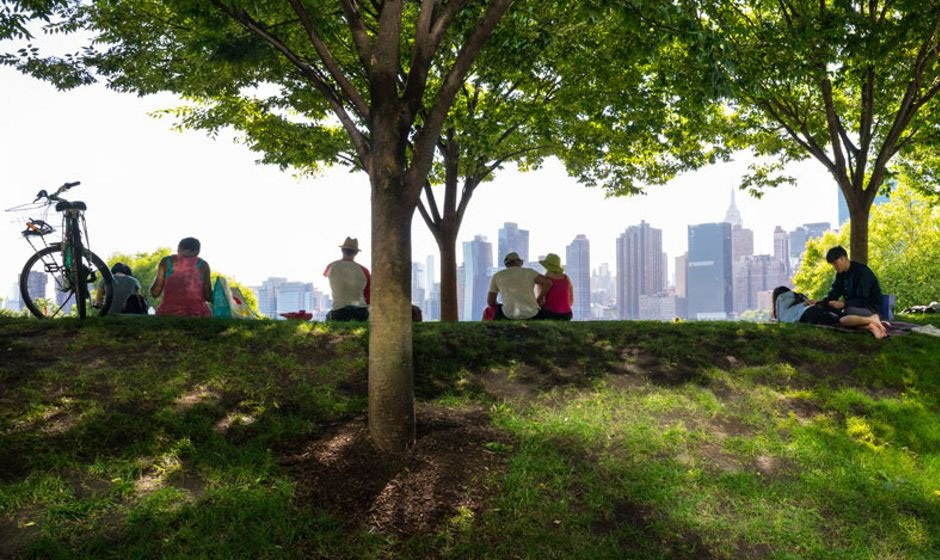Trees are often referred to as the lungs of the Earth, and for a good reason. They play a paramount role in maintaining the health of our planet’s ecosystem and provide a myriad of benefits to both humans and the environment. Taking care of trees is not just an aesthetic concern; it’s an essential responsibility that impacts the overall well-being of our planet and its inhabitants. From improving air quality to enhancing biodiversity, trees offer a range of advantages that underscore the significance of proper tree care.
Benefits of trees
1. Air Quality Improvement
One of the most compelling reasons to take care of trees is their profound impact on air quality. Trees absorb carbon dioxide through photosynthesis—a major greenhouse gas responsible for climate change—and release oxygen into the atmosphere. This natural process not only helps mitigate the effects of global warming but also contributes to cleaner, healthier air for all living beings. By maintaining trees’ health and stemming their decline, we ensure that this essential process continues to support a sustainable environment.
2. Biodiversity Support
Trees are vital components of ecosystems, providing habitat and sustenance for a diverse range of species. Their branches offer shelter for birds, mammals, insects, and microorganisms, while their leaves and fruits serve as food sources. When properly cared for, trees form a thriving environment for biodiversity, promoting a delicate balance within ecosystems. Protecting trees from diseases, pests, and deforestation safeguards the delicate web of life that relies on them.
3. Soil Health and Erosion Prevention
Tree roots recreate a pivotal role in stemming soil erosion. Their extensive root systems bind the soil together, reducing the risk of erosion caused by wind and water. Additionally, trees contribute organic matter to the soil as their leaves fall and decompose, enriching it with nutrients and supporting the growth of other plants. Proper tree care includes maintaining healthy root systems and ensuring that soil remains stable, preventing degradation, and maintaining fertile ground for various life forms.
4. Climate Regulation
The shade provided by trees helps regulate temperatures in urban areas, reducing the urban heat island effect. Concrete and asphalt absorb and radiate heat in cities, leading to elevated temperatures. Nevertheless, trees offer natural cooling by delivering shade and releasing moisture through a process known as transpiration. Proper tree care supports the creation of cooler, more livable urban environments and reduces the energy consumption needed for air conditioning, thereby mitigating the impact of climate change.
5. Aesthetic and Psychological Benefits
Beyond their ecological importance, trees contribute to the aesthetic beauty of landscapes and provide psychological benefits to people. Green spaces with trees have been shown to reduce stress and anxiety, improve mental well-being, and enhance the overall quality of life. Well-maintained trees in urban areas create inviting surroundings for communities, encouraging outdoor activities and social interactions. Investing in tree care, we cultivate environments that positively impact human health and happiness.
6. Economic Value
Trees have significant economic value as well. They enhance property values, lessen energy costs by providing shade, and contribute to the tourism and recreation industries. Well-kept trees can attract visitors to parks, nature reserves, and city streets, boosting local economies. Conversely, overlooking tree care can usher in increased costs associated with removing hazardous trees, repairing property damage, and addressing the consequences of poor air quality and ecosystem disruption.
7. Carbon Sequestration
Forests, particularly old-growth forests, are essential in the fight against climate change due to their ability to sequester carbon dioxide. Trees absorb carbon dioxide from the atmosphere and store it in their trunks, branches, and roots. This carbon sequestration helps offset the carbon emissions produced by human activities. By protecting existing trees and planting new ones, we enhance the Earth’s capacity to absorb excess carbon dioxide, paramount in mitigating climate change.
8. Preserving Cultural and Historical Heritage
Trees often hold cultural and historical significance within communities. Ancient, sacred groves and heritage trees are part of our shared history and identity. Caring for these trees preserves cultural heritage and maintains connections to the past. Moreover, teaching future generations about the importance of tree care helps instill a sense of responsibility and environmental stewardship.
The importance of taking care of trees cannot be overstated. From their contributions to air quality improvement and climate regulation to their support for biodiversity and their positive impact on human well-being, trees play an essential role in maintaining a healthy planet. Proper tree care involves nurturing their health, preventing diseases, and addressing threats like deforestation and pollution. By recognizing the multitude of benefits that trees provide and committing to their preservation through professional tree services in Lake Oswego, we ensure a sustainable and harmonious coexistence with the natural world.

